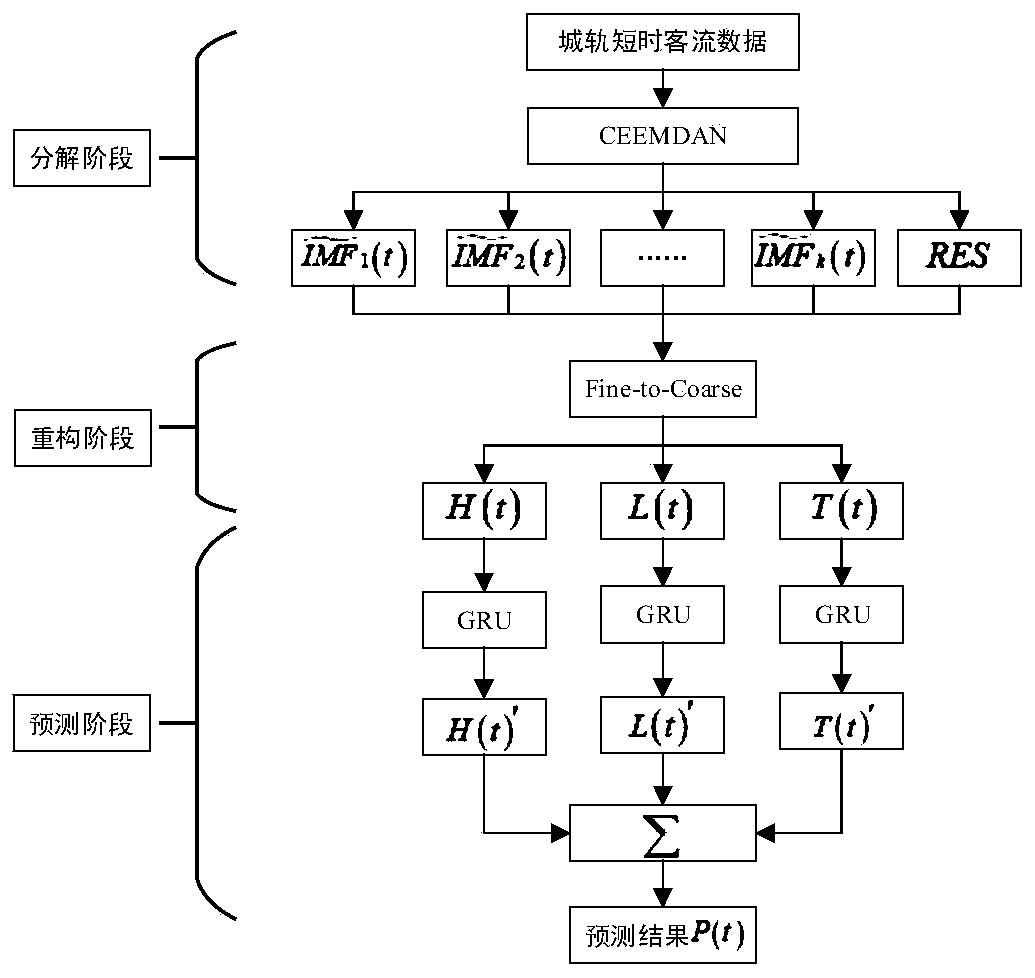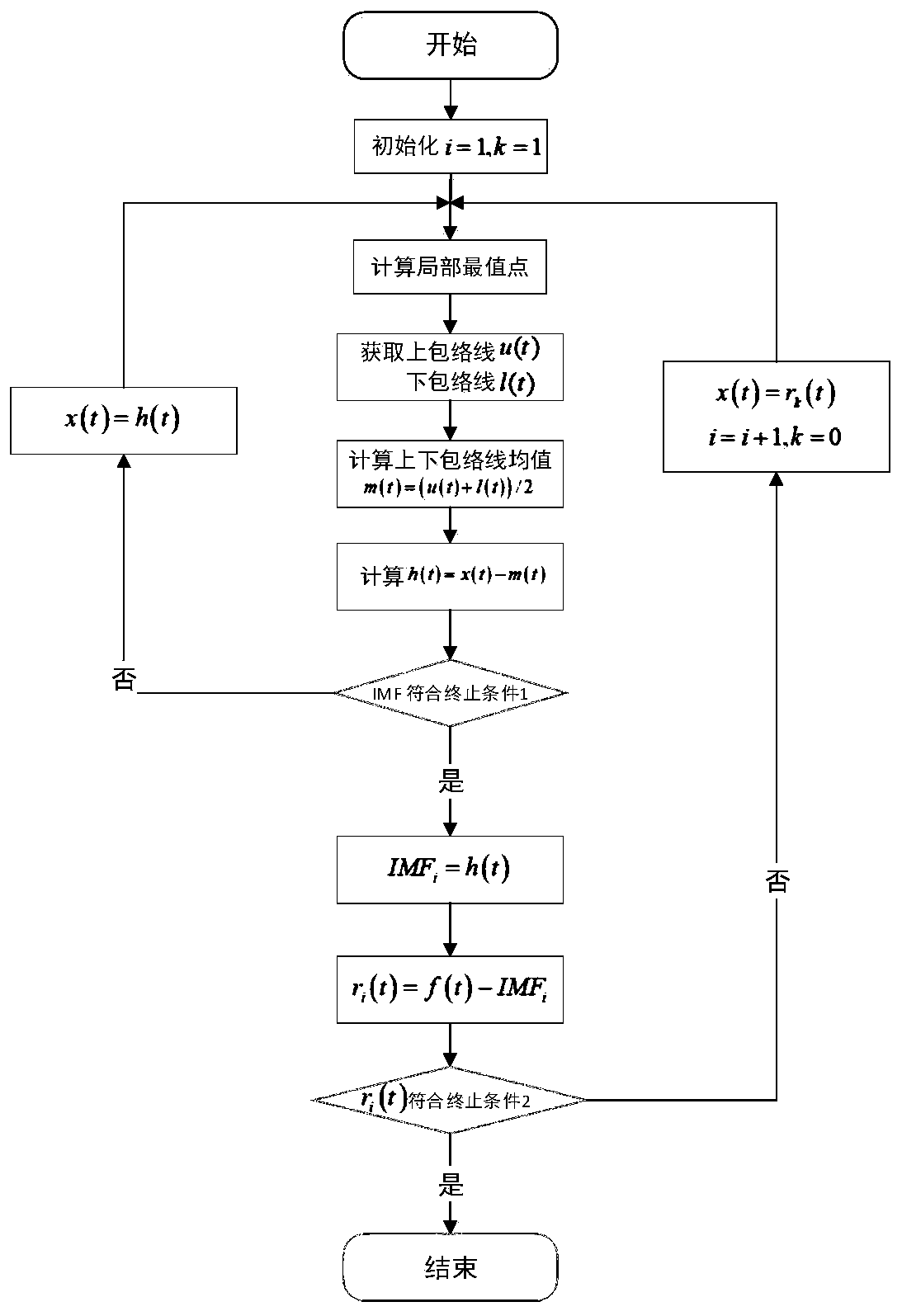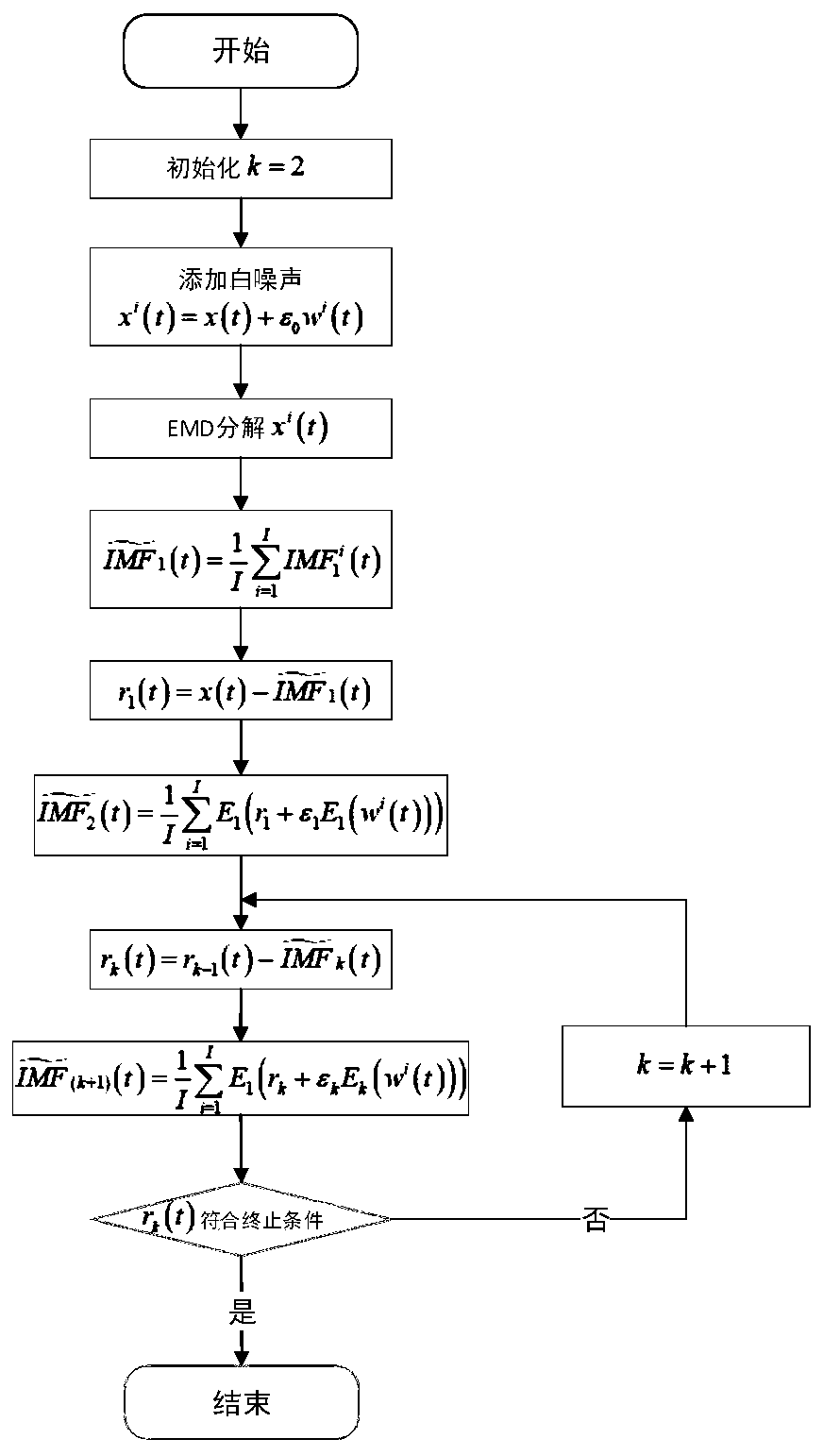An urban rail short-time passenger flow prediction method based on modal decomposition and deep learning
A technology of deep learning and modal decomposition, applied in forecasting, biological neural network models, instruments, etc., can solve the problems of timing, non-stationarity and nonlinearity of short-term passenger flow data, and overcome the defects of gradient explosion , Maintain information persistence and improve stability
- Summary
- Abstract
- Description
- Claims
- Application Information
AI Technical Summary
Problems solved by technology
Method used
Image
Examples
Embodiment Construction
[0021] A short-term passenger flow prediction method for urban rail based on modal decomposition and deep learning, such as figure 1 As shown, it mainly includes the CEEMDAN decomposition stage, the Fine-to-Coarse reconstruction stage, and the GRU prediction stage. The specific content is as follows:
[0022] 1. CEEMDAN decomposition stage
[0023] At this stage, the passenger flow data of urban rail transit is regarded as a piece of data composed of continuous smooth signal and abnormal noise. Use CEEMDAN to decompose and process the original passenger flow data. For a given data x(t), EMD can decompose the data to obtain a set of intrinsic mode functions IMF from high to low frequencies i (t), (i=1, K, I), I is the number of decomposition, high frequency (short period) IMF i (t) represents the high time-varying nature in the original data, low frequency (long period) IMF i (t) represents the long-period characteristics in the original data. The specific process of EMD d...
PUM
 Login to View More
Login to View More Abstract
Description
Claims
Application Information
 Login to View More
Login to View More - R&D
- Intellectual Property
- Life Sciences
- Materials
- Tech Scout
- Unparalleled Data Quality
- Higher Quality Content
- 60% Fewer Hallucinations
Browse by: Latest US Patents, China's latest patents, Technical Efficacy Thesaurus, Application Domain, Technology Topic, Popular Technical Reports.
© 2025 PatSnap. All rights reserved.Legal|Privacy policy|Modern Slavery Act Transparency Statement|Sitemap|About US| Contact US: help@patsnap.com



